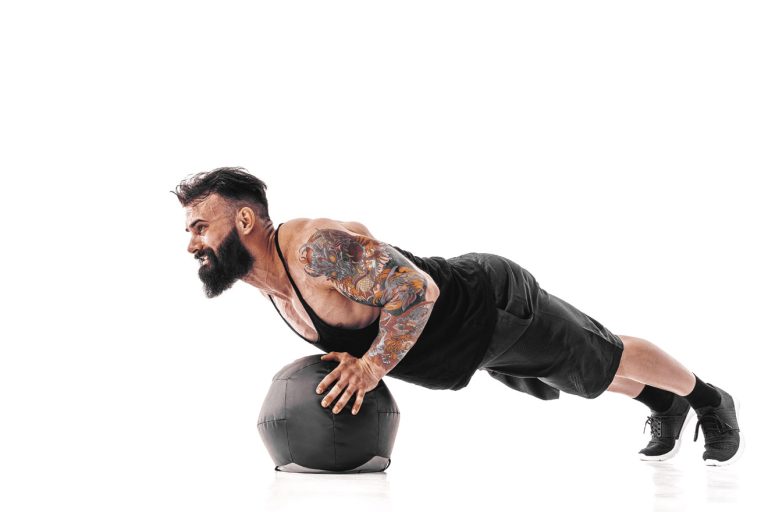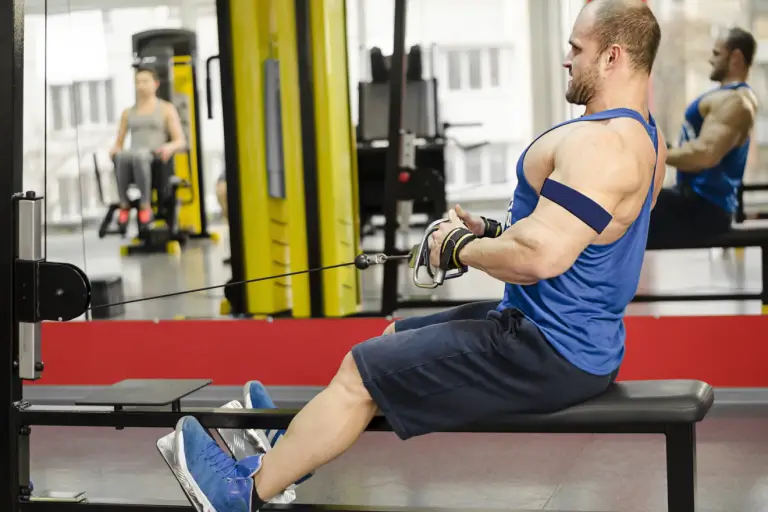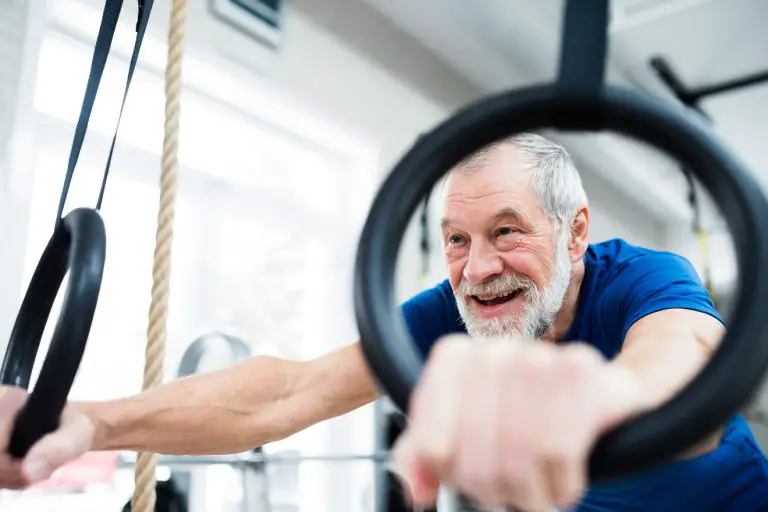The role of rest days in muscle growth, and why they are so important
Key takeaways
- Tiny tears in muscle cells are created when you do resistance training. It is when your body repairs these micro tears that your muscle gets larger and stronger. Your body is only able to repair these tears during rest, which is why rest is so important.
- A general guideline is that beginners and the elderly need 2 to 3 days of rest per week. For regular gym-goers or trainees, 1 to 2 days a week is enough. Above all, listen to your body and adjust accordingly.
- If you are experiencing decreased performance, persistent fatigue, burnout, or increased muscle soreness, it may be time to take a rest day.
Are you resting enough?
When it comes to building muscle, many people focus exclusively on their workouts—pushing harder, lifting heavier, and logging extra hours in the gym. However, an often overlooked but equally important component of muscle growth is rest. Taking rest days may feel counterproductive when you’re determined to reach your fitness goals, but the truth is, without proper rest, your muscles won’t grow, and you could be putting your long-term progress at risk.
In this article, we’ll dive into the science behind rest days, why they are essential for muscle growth, and how to ensure you’re getting the right balance between training and recovery for optimal results.
Why rest days are vital for muscle growth
Contrary to popular belief, muscles don’t grow during your workout. The actual process of how muscles grow, occurs during rest periods, especially on your designated rest days. Here’s why:
- Recovery and repair: every time you lift weights or perform resistance training, tiny tears form in your muscle fibers. While this sounds harmful, it’s actually the catalyst for muscle growth. During your rest days, your body repairs these micro-tears, making your muscles stronger and larger than before. Without adequate rest, your muscles can’t repair effectively, which limits growth.
- Muscle protein synthesis: for muscles to grow, the process of muscle protein synthesis (the building of new muscle proteins) needs to outpace muscle protein breakdown (the tearing of muscle fibers). Studies have shown that protein synthesis remains elevated for up to 48 hours after a workout. Rest days are when this process peaks, allowing your body to build new muscle fibers. If you don’t rest, you’re cutting short this window of opportunity for growth.
- Preventing overtraining: overtraining occurs when you push your body past its ability to recover. This can lead to fatigue, decreased performance, and even injury. When your muscles are constantly stressed without enough time to repair, you’re likely to hit a plateau in your progress, or worse, experience burnout. Rest days act as a buffer to prevent overtraining, giving your body the break it needs to perform optimally.
How many rest days do you need?
The number of rest days you need depends on various factors, such as your fitness level, the intensity of your workouts, and your specific goals. However, most fitness experts recommend taking at least 1 to 2 rest days per week. For more advanced lifters or athletes engaging in high-intensity training, an additional rest day or an active recovery day may be necessary. Here are a few general guidelines:
- Beginners: if you’re new to strength training or intense exercise, aim for 2 to 3 rest days each week. During this time, your body is still adapting to the stress of regular exercise, and recovery is critical to avoid injury and overtraining.
- Intermediate and advanced: for those who have been training consistently for a few months to years, 1 to 2 rest days per week should be enough. However, it’s important to listen to your body—if you feel fatigued, sore, or notice a dip in performance, taking an extra rest day can actually improve long-term progress.
Types of rest: full rest vs. active recovery
When planning your rest days, it’s important to understand the difference between full rest and active recovery. Each serves a purpose and can be beneficial depending on your training goals.
- Full rest days: these are the days when you completely refrain from physical activity. Full rest is ideal if your body feels particularly fatigued, sore, or if you’ve been training at a high intensity for several days in a row. Full rest days give your muscles, joints, and nervous system a chance to recover fully, which is vital for long-term progress.
- Active recovery days: active recovery involves low-intensity activities that promote blood flow and help remove metabolic waste from muscles, aiding recovery without causing further fatigue. Activities like light swimming, walking, yoga, or cycling at a moderate pace are great options for active recovery days. These workouts keep your body moving without adding stress to your muscles, helping you stay active while still promoting recovery.
Signs you need more rest
Sometimes it can be difficult to know if you’re taking enough rest days. If you’re pushing yourself hard in the gym, but not seeing the results you expect, it might be time to evaluate how much rest you’re giving your body. Here are some common signs that indicate you may need more rest:
- Persistent fatigue: if you constantly feel tired or have low energy levels, even after a good night’s sleep, it may be a sign that your body needs more time to recover. Persistent fatigue is one of the earliest signs of overtraining.
- Decreased performance: if you’re lifting less weight, running slower, or struggling to complete your usual workouts, it could be a sign that your muscles and nervous system are overworked. Rest days can help you come back stronger and refreshed.
- Increased muscle soreness: while some muscle soreness after a workout is normal, prolonged or excessive soreness that lasts more than 2-3 days is a sign your body isn’t recovering well. Extra rest days can help alleviate this soreness and prevent injury.
- Mental burnout: physical fatigue often coincides with mental burnout. If you find yourself dreading your workouts, or feeling unmotivated to exercise, you may benefit from more rest days to regain your enthusiasm.
The role of sleep in muscle recovery
While rest days are important, sleep plays an even more critical role in muscle growth and recovery. During sleep, your body produces growth hormone, which is responsible for repairing and rebuilding muscle tissue. Research shows that individuals who get 7-9 hours of quality sleep per night experience better muscle recovery and performance compared to those who sleep less.
If you’re consistently short on sleep, it’s likely to affect your recovery, regardless of how many rest days you take. Make sleep a priority in your training routine, and consider it an essential part of your recovery process.
Balancing rest with your training routine
Finding the right balance between training and rest is key to making progress without risking injury or burnout. Here’s how to integrate rest days into your routine for maximum results:
- Periodization: many athletes and fitness enthusiasts follow a structured training program that includes cycles of intense training followed by lighter, recovery-focused periods. Known as periodization, this strategy helps prevent overtraining and promotes long-term progress. You might plan for several weeks of hard training followed by a week of reduced intensity and more rest days.
- Listen to your body: your body gives you clues when it needs rest, so it’s important to listen. If you feel excessively fatigued, sore, or unmotivated, take a break. One or two days of rest won’t derail your progress, but overtraining can lead to injury and setbacks.
- Consider age and fitness level: as you age, your recovery time tends to increase. Older individuals may need more rest days or active recovery sessions to avoid injury and maintain muscle mass. Beginners also need more frequent rest days as their bodies adapt to new levels of physical stress.
Take those rest days!
The role of rest days in muscle growth cannot be overstated. While it’s tempting to think that more training equals faster results, the truth is that rest is where the magic happens. Your muscles grow, recover, and get stronger when you’re off the gym floor. By taking regular rest days and listening to your body’s signals, you can prevent burnout, reduce the risk of injury, and ensure long-term success in your fitness journey.
Rest is not a sign of weakness—it’s a crucial component of a balanced, effective training program. So, the next time you feel the urge to push through without a break, remember that giving your muscles the time they need to recover is just as important as the work you put in at the gym.
Written with the assistance of AI. Reviewed and edited by Marielle Livelo.







